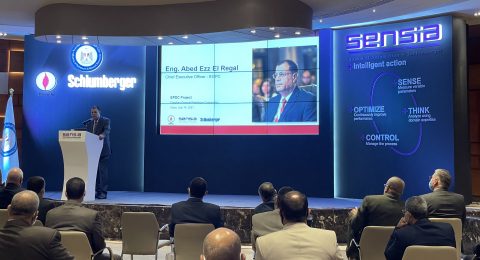Continuing the series of Egypt’s infrastructure, this part tackles the processing plants and facilities distributed in various corners in the country, their capacity and the future plans
In order to efficiently develop the country’s new gas discoveries, the natural gas has to go through processing plants for two main objectives. The first is to purify the discovered gas from impurities and remove any contaminants, such as CO2, H2S, water vapour and heavier gas liquids that could compromise the integrity of the gas transmission pipelines.
Secondly, the technologies utilized in the gas processing facilities are characterized by the ability to extract hydrocarbon liquids that are contained in the produced natural gas stream, such as propane, butane and heavier components as well as ethane gas. Thus, the second objective of gas processing facility is to recover the natural gas liquids.
Both objectives lead us to another step, which is the transmission and distribution of natural gas via pipelines to buyers. In order to meet the demands of the end user, gas goes through the conditioning and treatment phases, which are necessary for the so called “sales gas specification”.
Focusing on the Egyptian gas processing facilities, there are approximately 23 plants in operation, processing over 6000 MMSCFD that is nearly the same volume of natural gas that the country is presently producing. The Egyptian Natural Gas Holding Company (GASCO) is the operator of most of the gas processing plants, which collectively extract 111000 barrels per day of condensate and 2905 tons per day of LPG.
Egypt’s gas processing facilities include: Obayed, Tarek, Salam, Abu Qir, Rosetta, Ha’py, Port Fouad/Darfeel/Temsah, Abu Madi & North Abu Madi, Ameriya, Bed 2-3, Abu Gharadiq, Abu Sinan, Dahshour, Trans Guld, Ras Shukheir, Zeit Bay, Abu Rodeis, Western Desert, El-Manzala, West Delta Marine, Wastany and UGDC. The total capacity of these plants is 7238 MMSCFD.
Due to the growing demand of end-users and the increasing number of gas discoveries need to be put on development and production lines, more gas processing facilities to be built in Egypt. Currently, constructions are held for new plans with the aim of processing additional gas in order to be produced over the coming years. One of these plants is located in the Mediterranean, with a processing capacity of 900 MMSCFD. Moreover, a one-train plant will be constructed in the area of the Gulf of Suez, with a processing capacity of 150 MMSCFD.
The reason behind constructing such a huge plant in the Mediterranean lies in the latest study conducted by BP and EGAS in coordination with ECHEM declaring that this area includes additional rich gas, from which extraction of significant volumes of ethane, propane and butane is likely to occur.
The Mediterranean is not the sole area grapping the attraction. The Western Desert is considered as one of the promising and rich areas in the country. In the shadow of the wave of discoveries attained in this area, GASCO is executing a project that would expand the Western Desert Gas Complex to be integrated with Ameriya gas treating and LPG recovery plant, with an additional gas liquids production.
Such strategies of expanding the base of gas processing plants are means to ensure the operational integrity of the national natural gas grid. Over the next 5-10 years, Egypt’s gas production will stabilize at the average of 12 thousand MMSCFD. That is why more plants are crucially needed in order to increase the volume of gas processing capacity.
However, the number of plants that needs to be installed depends on two main factors: quality of discovered gas and the specifications of consumers. In other words, if the gas discovered is rich in natural gas liquids, sophisticated NGL recovery schemes should be considered. While, on the other hand, if gas includes lower calorific content, the incremental processing capacity would likely contemplate only gas treating facilities to achieve pipeline specifications. Therefore, both conditions should be considered while planning for or constructing new processing facilities.
To be continued…
By Yomna Bassiouni







